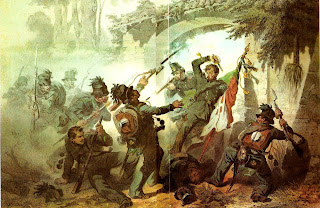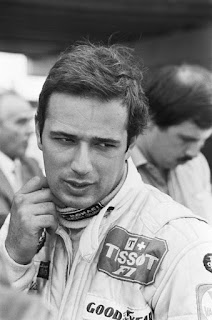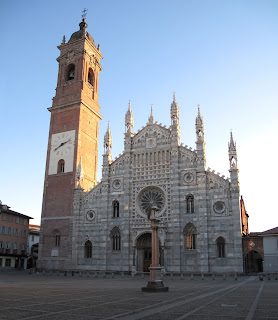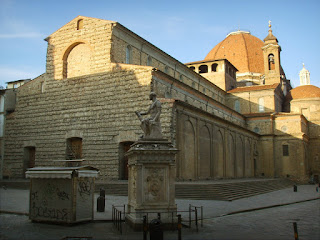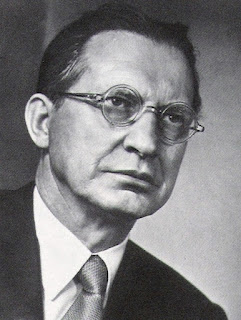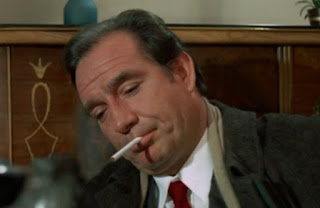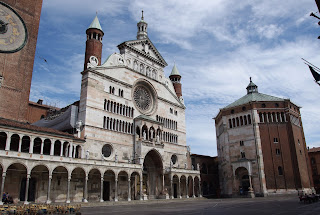Claimed first pedal-powered flight in 1936
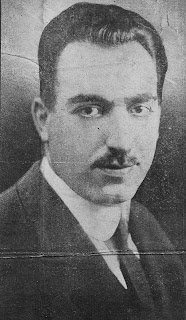 |
| Enea Bossi emigrated to the United States after the First World War |
It was claimed that in 1936 Bossi's Pedaliante aircraft flew for approximately 300 feet (91.4m) under pedal power alone.
Piloted by Emilio Casco, a robustly built major in the Italian army and an experienced cyclist, the Pedaliante - or pedal glider - is said to have taken off and covered the distance while remaining a few feet off the ground, although in the absence of independent verification it is not counted as the first authenticated human-powered flight, which did not take place until 1961 in Southampton, England.
The following year, as Bossi attempted to win a competition in Italy offering a prize of 100,000 lire for a successful human-powered flight, Casco succeeded in completing the required 1km (0.62 miles) distance at a height of 30 feet (9m) off the ground.
The Pedaliante, which had been built by the Italian glider manufacturer Vittorio Bonomi, was disqualified, however, on account of having used a catapault launch to achieve its altitude. Bossi, in fact, was ineligible for the prize because he had taken American citizenship after emigrating shortly after the First World War, and the competition was open only to Italians.
Bossi was an aeronautical pioneer throughout his career.
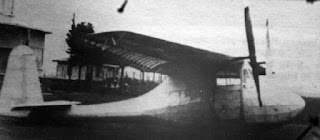 |
| Bossi's Pedaliante plane was powered by pedalling |
Bossi graduated from the Instituto Tecnico in Lodi, not far from Milan, in 1907, specialising in physics and mathematics. He had already become fascinated with flight after the Wright brothers’ Flyer became the first heavier-than-air machine to be airborne in December 1903.
He became only the second person in Italy to have a pilot's licence and, with the financial support of a far-sighted father who did not share the general scepticism about flying, set about designing a glider that could carry a petrol-driven engine.
Modelled on the Wrights' Flyer, the design won a silver medal at the first international aviation meeting in Reims, France, in 1908 and the plane was built in Bossi’s own factory the following year.
 |
| Bossi, his son Charles and the Higgins helicopter |
The possibility of going to the United States came about after he began working as the Italian representative of Curtiss Aeroplane and Motor Company – based in Buffalo, New York - for whom he secured rights for the production of the Curtiss Model F by the Zari brothers, at their workshop in Bovisia, near Milan. The first of these was demonstrated to the Italian Navy on Lake Como in September, 1914.
During the First World War, Bossi served as both a bomber pilot and a flight instructor for the Italian Navy. The economic and social difficulties in Italy that followed the war persuaded him to move permanently to the United States in 1918.
Living first in New York and later in Montclair, New Jersey and Philadelphia, he was granted US citizenship in 1925. He married Flora Kelher, a Swiss-German girl who was living in Connecticut, and they had two sons, Charles and Enea Junior.
 |
| Bossi at his desk in the United States in the 1930s |
In around 1930 Bossi moved to the EG Budd Manufacturing Company, where he built the first stainless steel aircraft, an amphibious biplane now preserved at the Franklin Institute in Philadelphia.
After his time back in Italy in pursuit of the human-powered flight prize, he returned to the US, where he built a helicopter prototype for Higgins Industries of New Orleans.
After retirement, he moved to with his family to Dayton, Ohio, where he died in January, 1963.
 |
| The Church of Sant'Ambrogio on Piazza Gramsci in Cinisello |
The first flight of the Pedaliante took place at an airfield juts outside Cinisello, nowadays a town of around 75,000 inhabitants called Cinisello-Balsamo. It falls within the Milan metropolitan area, between Sesto San Giovanni and Monza, about 10km north-west of the city centre. It is a pleasant town of which the Piazza Gramsci is the central square, overlooked by the 17th century church of Sant'Ambrogio. Cinisello's Villa Ghirlanda Silva Cipelletti owned one of the first landscaped gardens in Italy. It now houses the Museum of Contemporary Photography.
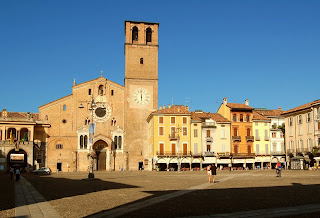 |
| The Piazza della Vittoria in Lodi |
Lodi, the city in Lombardy that was the scene of the first battle between the troops of the young Napoleon Bonaparte and the Austrians, retains a mostly Medieval layout, starting from the remains of the Visconti Castle, built by the ruling Visconti family alongside the city walls in 1370. The Piazza della Vittoria, ringed with colonnades and overlooked by the cathedral and the Palazzo Comunale, is the focal point. Nearby, the churches of San Francesco and Sant’Agnese are worth a look, as id the 13th century church of San Lorenzo.
More reading:
From Rome to the North Pole - the historic airship journey from Ciampino airport
Aeronautical genius famed for helicopters and the Vespa scooter
How aviation made Camillo Castiglioni the richest man in Europe
Also on this day:
1939: The birth of Terence Hill, Venetian actor with an English name
(Picture credits: Lodi piazza by Gabriele Zuffetti via Wikimedia Commons)
Home







